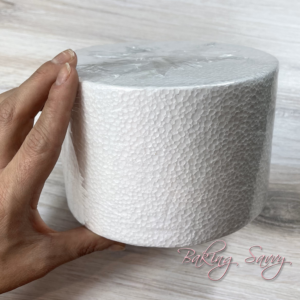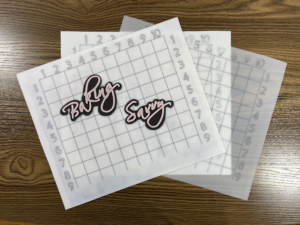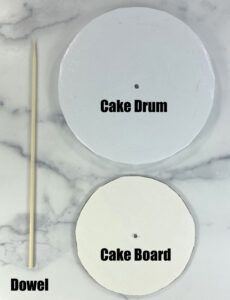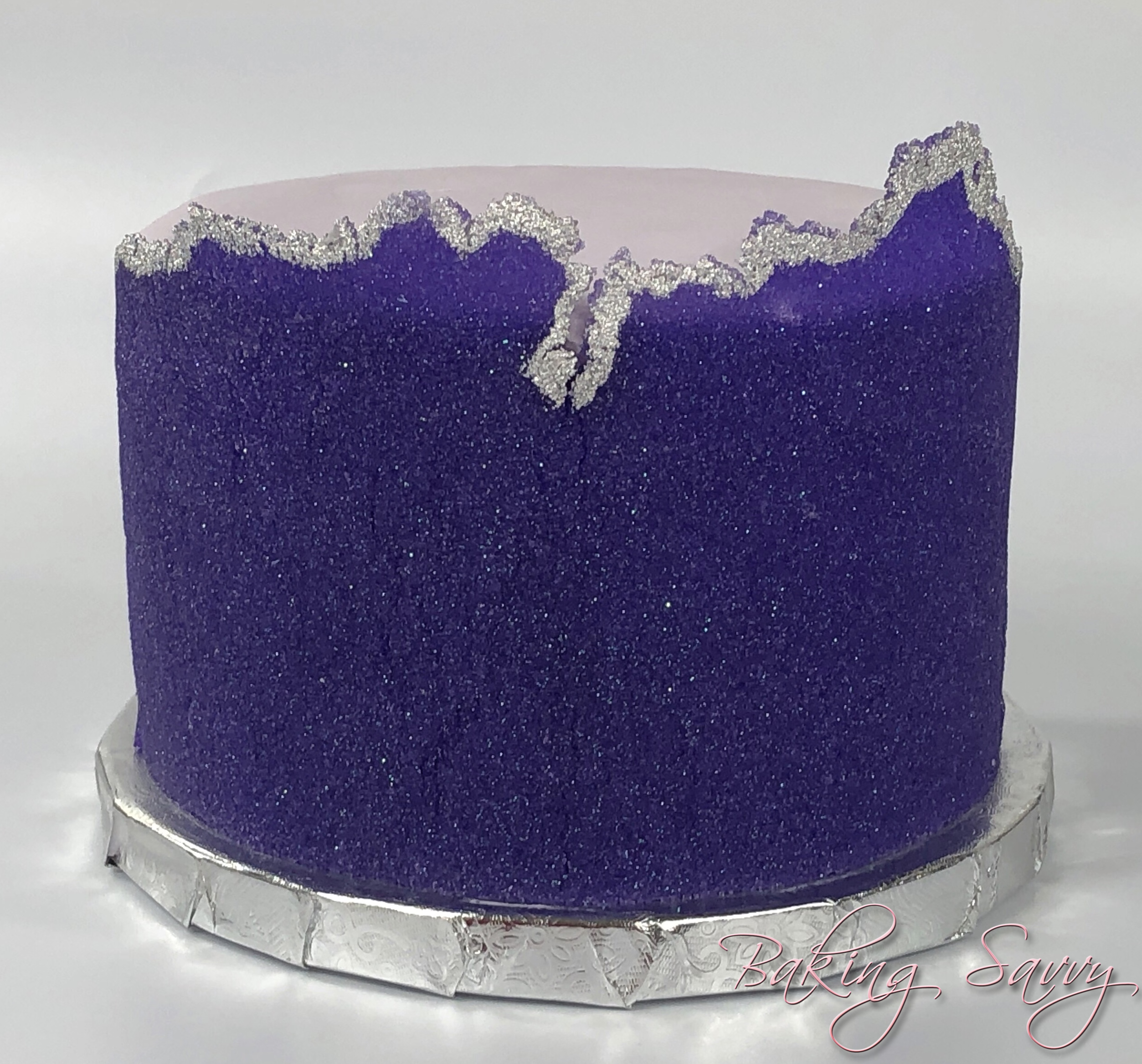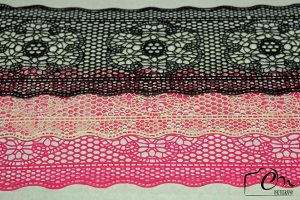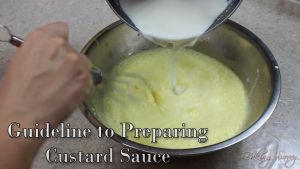
Guideline for Preparing Custard Sauce
The following guidelines will help you succeed, in making any custard sauce. It is especially important to follow these rules, to avoid food poisoning, as well as having your eggs curdle, ruining your recipe.
1.Use clean, sanitized equipment and follow strict sanitation procedures. Egg mixtures are good breeding grounds for bacteria that cause food poisoning. Bacteria grow best at warm temperatures. Those between 41°F (5°C) and 135°F (57°C) promote the growth of disease-causing bacteria. This temperature range is called the Food Danger Zone.
2. Before beginning the cooking process, set a stainless steel bowl in a larger pan of ice water and place a strainer over the bowl. This will help you cool the mixture within the given time frame you need to cool the mixture down and avoid the Food Danger Zone, as well as overcooking the eggs.
3. When combining the egg yolks and sugar, whip the mixture as soon as the sugar is added. Letting sugar and egg yolks stand together without mixing creates lumps that cannot be beaten out. This is because the sugar absorbs water from the yolk, leaving lumps of dehydrated yolk. Using a stainless steel bowl for this step makes the cooking and stirring easier.
4. Heat the milk to scalding ( just below simmering) before combining with the egg yolks. Do not let the milk to come to a rolling boil. To avoid scorching the milk, you can set the pan of milk in a pan of boiling water. Although this takes longer than using direct heat, the pan can be left unattended for a few minutes while you perform other tasks, such as starting to whip the eggs and sugar together.
5. Slowly beat the hot milk into the beaten eggs and sugar. Pour a little bit at a time. This process is called “tempering”. You are slowly raising the temperature of the eggs and helps prevent curdling.
6. Set the bowl containing the egg mixture in a pan of simmering water, also known as a bain-marie. Stir constantly to prevent curdling.
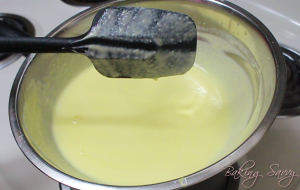
7. To test for doneness, two methods are possible. Keep in mind that this is a very light sauce, so don’t expect a lot of thickening. Always have a thermometer at hand. When it reaches 180°F (82°C), the sauce is cooked. Do not let the temperature go higher, or the sauce is likely to curdle. Another way to know if your mixture is done cooking, is through Nappe. It is determined by stirring the sauce with a wooden spoon and then running a finger across the back of the spoon. If the sauce runs down, the sauce is not yet to nappe, if the sauce holds it’s place it is at nappe, in other words, done.
8. Immediately pour the sauce through the strainer into the bowl set in ice water to cool the sauce quickly. Stir occasionally to cool it evenly.
9. If the sauce accidentally curdles, it is sometimes possible to save it. Immediately stir in 1 to 2 ounces (30 to 60 mL) cold milk, transfer the sauce to a blender, and blend at high speed. However, if you have time, and don’t mind starting over, this option would be best. Especially if serving to guests.

